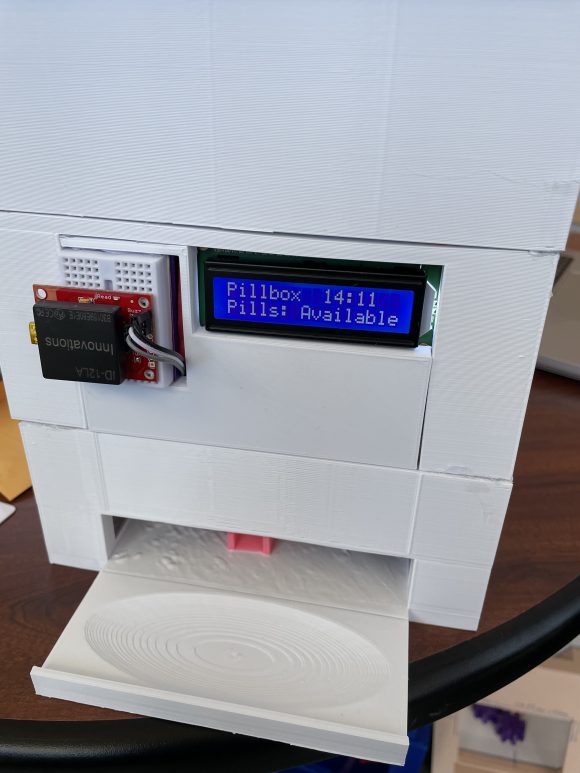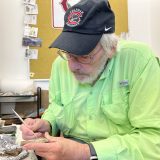Student Teams in Grand Challenges Initiative Collaborate with Johnson and Johnson Thomas Ogawa '24, Yuna Kim ’24, Dominic Carosso ’24, and Alan Lu '24 develop a smart pillbox
September 12, 2022
At first glance, making a new and improved pillbox does not sound that difficult. But what if that pillbox needs to be tamperproof and capable of dispensing multiple pills at specific times on specific days?
“Turns out that once you start to think about the design requirements, it is not so simple,” noted computer science student Thomas Ogawa ’24. He and his teammates, Yuna Kim ’24, Dominic Carosso ’24, and Alan Lu ’24, took on the challenge as their project for the Grand Challenges Initiative. The idea was one of two proposed by Johnson & Johnson, which is one of a growing number of community partners contributing to the program by proposing real-world problems for students to study.
Under the mentorship of Vice President of Innovation at Johnson & Johnson, Dr. Sanjay Mistry, the team’s solution was to create a programmable and automated pill dispenser. To do this, the team decided to design and 3D-print a pillbox that could communicate with a programmable wristband via a radio-frequency identification (RFID) tag. The goal was that when the wristband was held close to the pillbox, the box would then release the correct medication and dosage to the patient on demand.
Using the tools available in the Grand Challenges Initiative Makerspace, the team 3D printed housing, assembled a motorized dispenser triggered by an RFID using open-source hardware called RaspberryPi, and added programming code to restrict the time in which pills would be dispensed. Their prototype was on display at the Grand Challenges Initiative’s annual project showcase where the team was one of five recognized for outstanding achievement.
“I was surprised by how invested and helpful our Johnson & Johnson mentors were…they really wanted us to succeed, not just in our project, but in our personal careers as well,” said Ogawa about his experience.
Behind the scenes is Ms. Nur Mustafa, who manages an early career talent strategy program within R&D at Johnson & Johnson. Nur’s goal is to invest in the development of the company’s next generation of scientists and engineers.
“Partners like Nur, who recognize the potential of our students and invest in their success, are opening so many new doors into science and engineering. It’s transforming the student experience and really introduces students to the complex and interdisciplinary nature of solving problems,” notes Gregory Goldsmith, PhD, who directs the Grand Challenges Initiative.
A second student team, composed of Gabriella Suarez ‘24, Azure Gilmore ‘24, Caroline Gallagher ‘24, Lorenzo Pessi ‘24, and Avery Whyte ’24, worked with Dr. Rose-Ann Blenman-Abange from Johnson & Johnson to study the effects of Alzheimer’s Disease. Their project culminated in a comparison of the use of technology versus paper and pencil on memory and cognition.
The Grand Challenges Initiative is also currently partnering with LayerJot, ECOS, and Eureka! by SAP.


